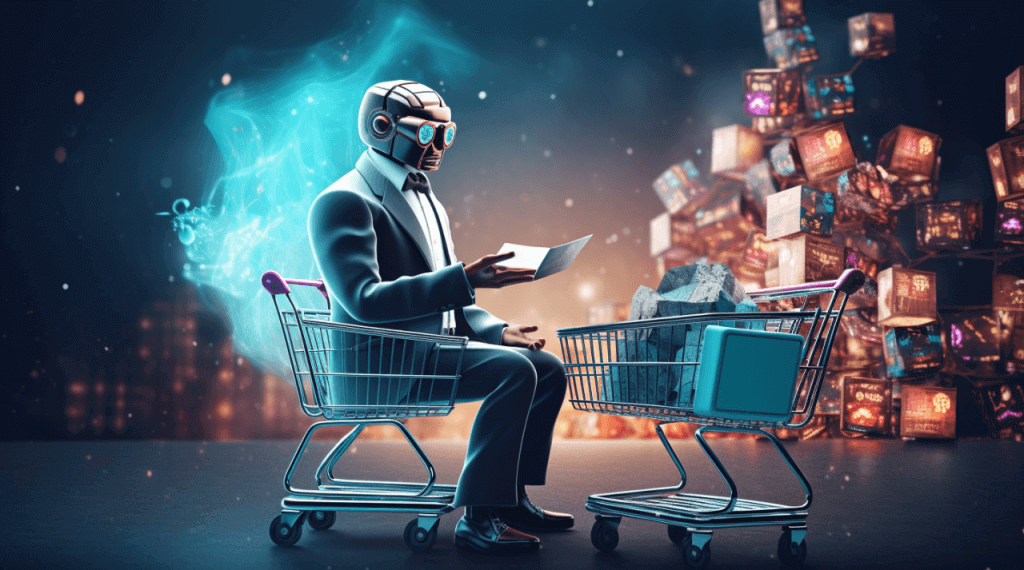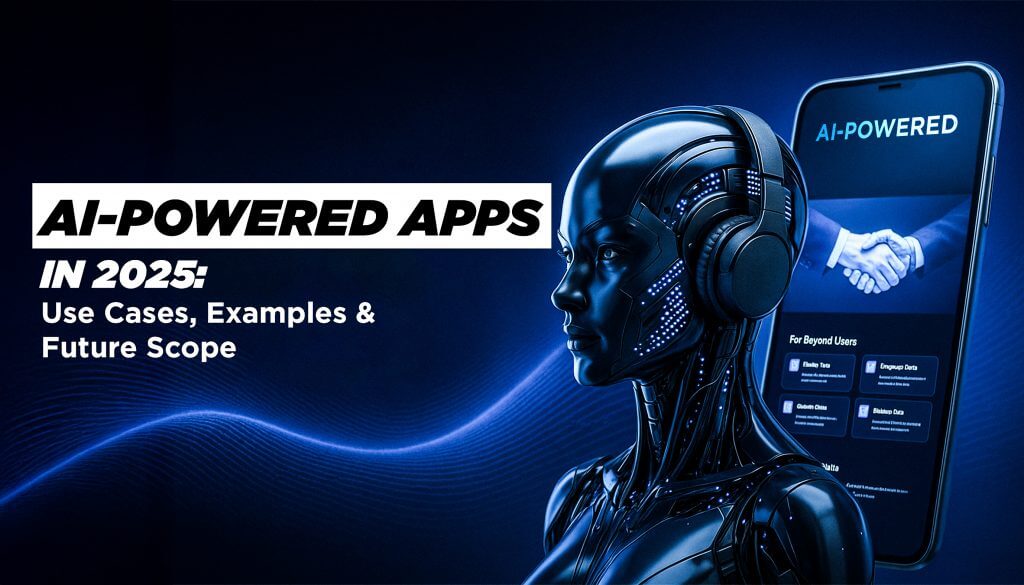Artificial Intelligence (AI) is no longer a futuristic concept—it’s deeply embedded in our daily lives, especially in the way we shop online. From the moment we land on an e-commerce site to the second we complete a purchase, AI technologies are working behind the scenes to personalize, streamline, and secure the shopping journey. Businesses are leveraging AI to better understand their customers, automate operations, and create a more engaging and efficient experience.
As consumers, we’re benefiting from more tailored product recommendations, smarter search tools, responsive chatbots, and even virtual try-ons—all thanks to AI. In this article, we’ll explore how AI is changing the way we shop online, highlighting 15 powerful transformations reshaping the digital retail landscape.
1. Personalized Shopping Experiences
How AI Analyzes User Behavior
AI tracks a shopper’s browsing history, past purchases, time spent on product pages, and even cursor movement to create detailed behavioral profiles. Machine learning algorithms digest this data to understand preferences and anticipate needs—offering suggestions even before you realize you want something.
Custom Product Recommendations
Platforms like Amazon and Netflix have set the gold standard in AI-driven recommendations. When AI detects patterns in user behavior, it pushes the most relevant products to the front—enhancing user experience and increasing sales. According to McKinsey, 35% of Amazon’s revenue comes from AI-powered product recommendations.
2. Smarter Search Functionality
Natural Language Processing (NLP) in Search
AI allows e-commerce platforms to understand and interpret human language better. Shoppers can now type or speak in full sentences like, “Show me red dresses under $50,” and get accurate results thanks to NLP.
Visual Search Capabilities
AI enables users to upload an image and find similar items online. Pinterest and ASOS are already using visual search to let shoppers browse by photos instead of words—ideal for fashion and home decor shopping.
3. AI-Powered Chatbots and Virtual Assistants
Instant Customer Support 24/7
AI-driven chatbots like those on Sephora and H&M websites are revolutionizing customer service. These bots can answer FAQs, help with returns, suggest products, and escalate issues to human agents when needed.
Personalized Interaction Through Machine Learning
The more you interact with these bots, the smarter they get. Over time, they learn your preferences and can suggest highly personalized solutions, creating a seamless user experience.
4. Inventory Management and Demand Forecasting
Predictive Analytics for Stock Control
AI examines past sales data, seasonal trends, and market conditions to predict which products will sell and when. This helps retailers avoid overstocking or running out of popular items.
Reducing Overstock and Stockouts
Brands like Zara use AI to monitor store performance and adjust inventory levels in real time. This helps maintain optimal stock levels and reduces wastage.
5. Dynamic Pricing Optimization
How AI Analyzes Market Trends in Real Time
Dynamic pricing adjusts prices based on demand, competition, and customer behavior. AI continually monitors these factors to offer competitive pricing without human intervention.
Competitor and Consumer Behavior Monitoring
Platforms like Shopify and BigCommerce integrate tools that help businesses track competitors and adjust prices accordingly—boosting profitability and staying ahead of the game.
6. Fraud Detection and Cybersecurity
AI in Payment Verification Systems
AI algorithms detect irregular buying patterns, flag suspicious transactions, and prevent fraud in real time. This ensures secure and seamless checkout experiences for users.
Protecting User Data in E-Commerce
AI also protects sensitive customer data from phishing attacks and data breaches by monitoring security logs and flagging threats instantly.
7. Voice Commerce and Smart Assistants
Growth of Voice-Based Shopping
With devices like Alexa and Google Home, voice commerce is on the rise. Shoppers can now say, “Order paper towels,” and have their favorite brand delivered without opening an app.
AI Integration with Alexa, Siri & Google Assistant
These smart assistants use AI to recognize voices, understand commands, and even suggest items based on past purchases or preferences.
8. Visual Merchandising and AI Design Tools
AI in Website and App Interface Design
AI tools like Wix ADI and Adobe Sensei help design visually appealing e-commerce interfaces based on user behavior and brand aesthetics.
Enhancing UX with Real-Time Data
AI can test different website layouts or call-to-action buttons and automatically display the most effective version to each visitor—improving user experience and conversion rates.
9. Augmented Reality (AR) for Virtual Try-Ons
How AI Enhances AR Capabilities
AR combined with AI allows users to try on glasses, shoes, makeup, or furniture virtually before buying. Brands like Warby Parker and IKEA use this tech to reduce return rates.
Boosting Customer Confidence in Online Purchases
When users see how a product looks on them or in their space, they feel more confident in their purchase decisions—leading to higher satisfaction and fewer returns.
10. Sentiment Analysis and Customer Feedback
AI Analyzing Reviews and Social Media Feedback
AI tools can scan thousands of product reviews and social media comments to identify trends, sentiment, and areas for improvement.
Product Improvements Based on Real-Time Insights
Retailers use this information to tweak products, adjust marketing strategies, and address customer concerns more efficiently.
11. Supply Chain Automation
AI’s Role in Logistics and Delivery
From warehouse robots to route optimization software, AI is streamlining supply chains. It ensures faster, cheaper, and more accurate order fulfillment.
Reducing Human Error and Increasing Speed
Companies like FedEx and DHL are using AI-powered logistics to cut down delivery times and improve accuracy.
12. Hyper-Targeted Marketing Campaigns
AI-Driven Email and Ad Personalization
AI helps segment audiences and craft personalized marketing messages. Emails, social ads, and push notifications are now tailored based on a user’s interests, behaviors, and browsing patterns.
Improving Conversion Rates with Data Insights
When messages feel personal, users are more likely to engage—resulting in higher click-through and conversion rates.
13. Ethical and Privacy Concerns of AI in Shopping
Responsible AI Use in Retail
While AI offers benefits, it also raises ethical questions. Retailers must use AI responsibly, ensuring it doesn’t discriminate or manipulate users unfairly.
Balancing Personalization and Privacy
Brands need to find the sweet spot between offering personalized experiences and protecting user privacy. GDPR and similar regulations aim to keep this balance in check.
14. Case Studies of AI in Online Retail
Amazon’s AI Strategies
Amazon uses AI extensively—from Alexa voice shopping to anticipatory shipping and personalized recommendations—cementing its lead in the e-commerce space.
How Shopify Uses Machine Learning
Shopify merchants can tap into AI tools for sales forecasting, customer insights, and chatbots—leveling the playing field for small and medium businesses.
15. Future Trends: What’s Next for AI in E-Commerce?
Predictive Commerce and Automation
AI will soon predict what you need before you know it and place the order automatically. Subscription models will become even more intelligent.
Evolving Customer Expectations
As AI tools become more advanced, shoppers will expect ultra-personalized, lightning-fast, and interactive experiences—pushing retailers to innovate constantly.
Conclusion
AI is revolutionizing the online shopping experience by making it faster, smarter, and more personalized than ever before. From predictive analytics to real-time personalization, e-commerce is undergoing a radical transformation. While challenges remain in privacy and ethics, the future of AI in retail is undeniably bright. Retailers that embrace AI today will not only meet but exceed customer expectations tomorrow.


